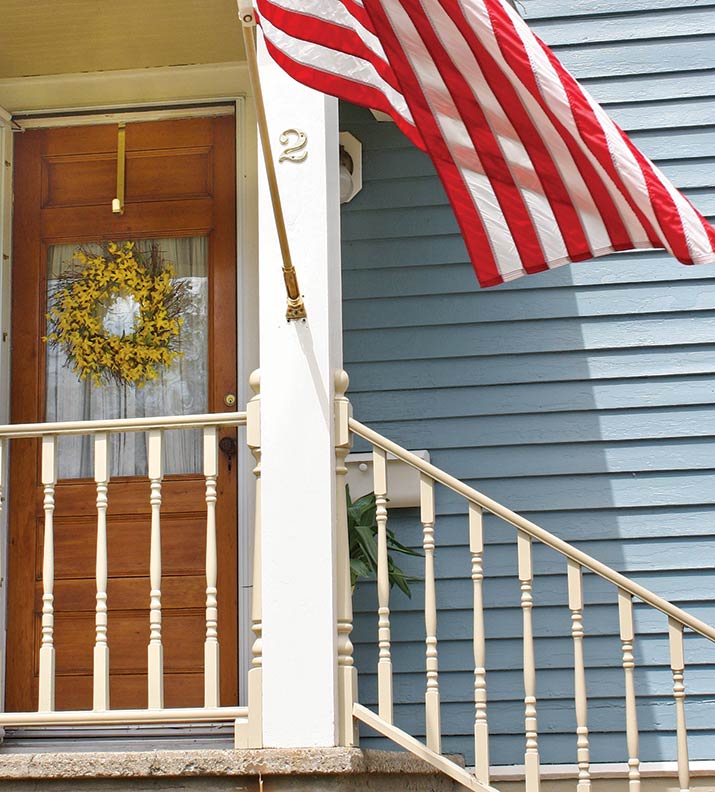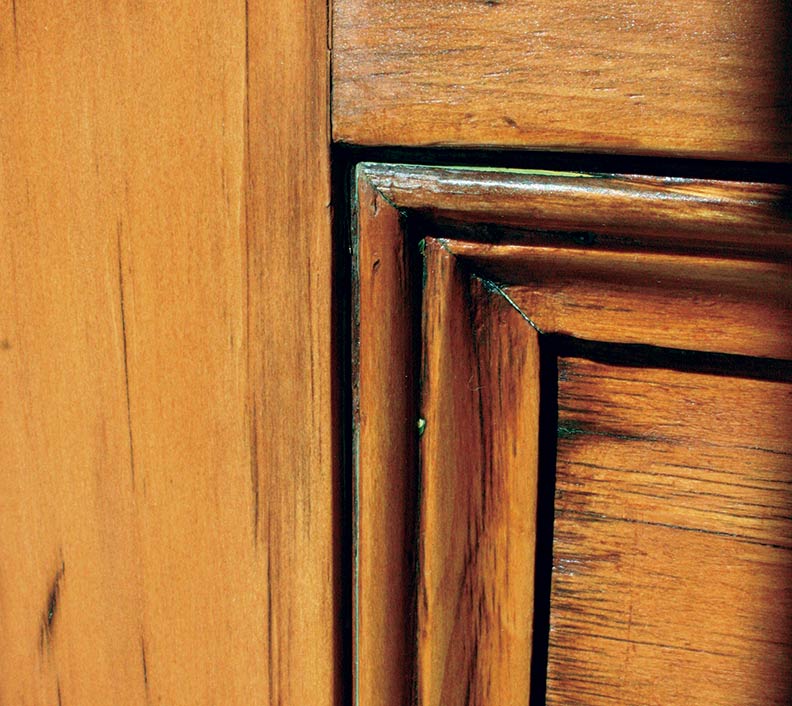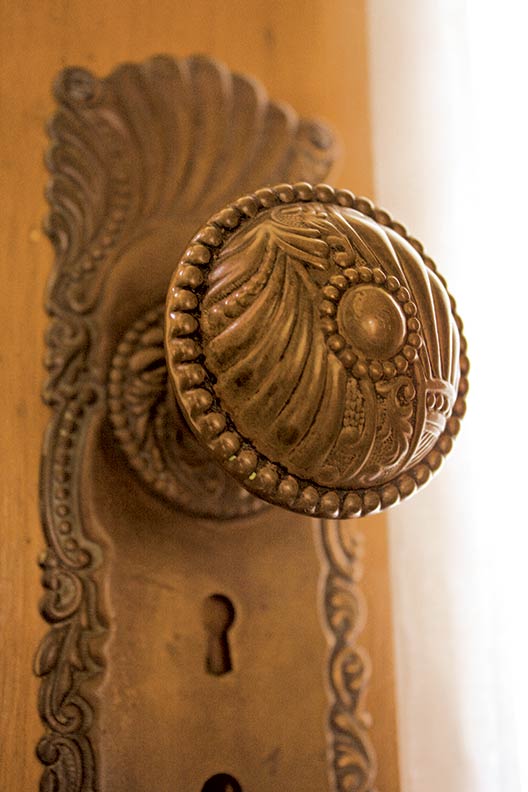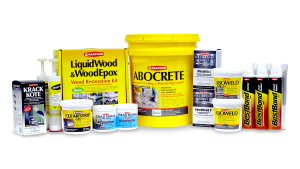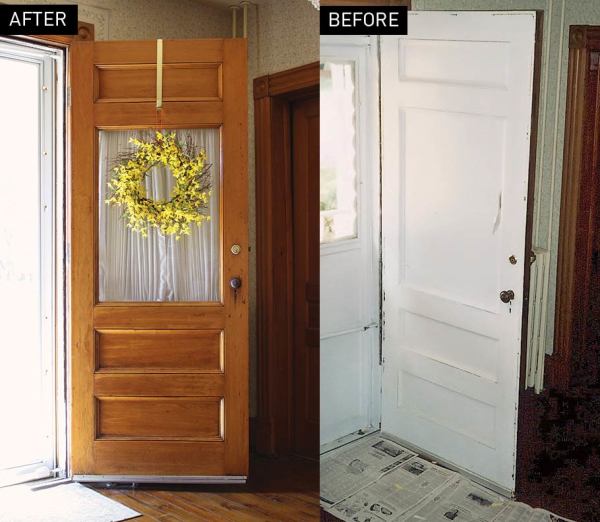
It took some time before the owners realized the door’s middle panel was glass.
T.J. Pignataro
You never know what lurks beneath—in our case, beneath thick layers of paint that would need to be stripped. But we knew that our front entry door was a glorious, golden-tone wood, and that it was originally clear-finished: The previous owners had not painted its interior face. And though it had been painted over, the large pane of glass in the door was intact.
It took a lot of work, mostly by my husband. (I was pregnant at the time.) T.J. remembers that the project spanned from early baseball season until the middle of college football. For each work session, he removed the door to the garage to work flat. Most of the paint came off with a heat gun and large metal scraper (always working with the grain). Paint layers included pale yellow, blue, and light green. Then T.J. used a 1″ scraper in the grooves and corners, and razor blades to remove stubborn paint on the glass.
Next came sandpaper and sanding sponges, starting with 60 grit and ending with 180 grit on a sanding block. He applied three coats (lightly sanding in between) of a urethane spar varnish. Despite imperfections in the old wood—marks of age—the door gleams, and the glass admits light. The entry has gone from remuddled to period-perfect.
Secrets to Success
Books and products mentioned in oldhouseonline stories are chosen by our editors. When you buy through links on this site, we may earn an affiliate commission.
- 3M SandBlaster sandpaper and sanding blocks. These are durable and do a great job—worth the money because they don’t gunk up.
- Spar urethane. We used a marine finish to stand up to our severe winters. T.J. applied three coats of Minwax Helmsman urethane in “clear gloss.”
- Razor blades. We used regular flat single blades to scrape the old paint from the window glass in the door.



